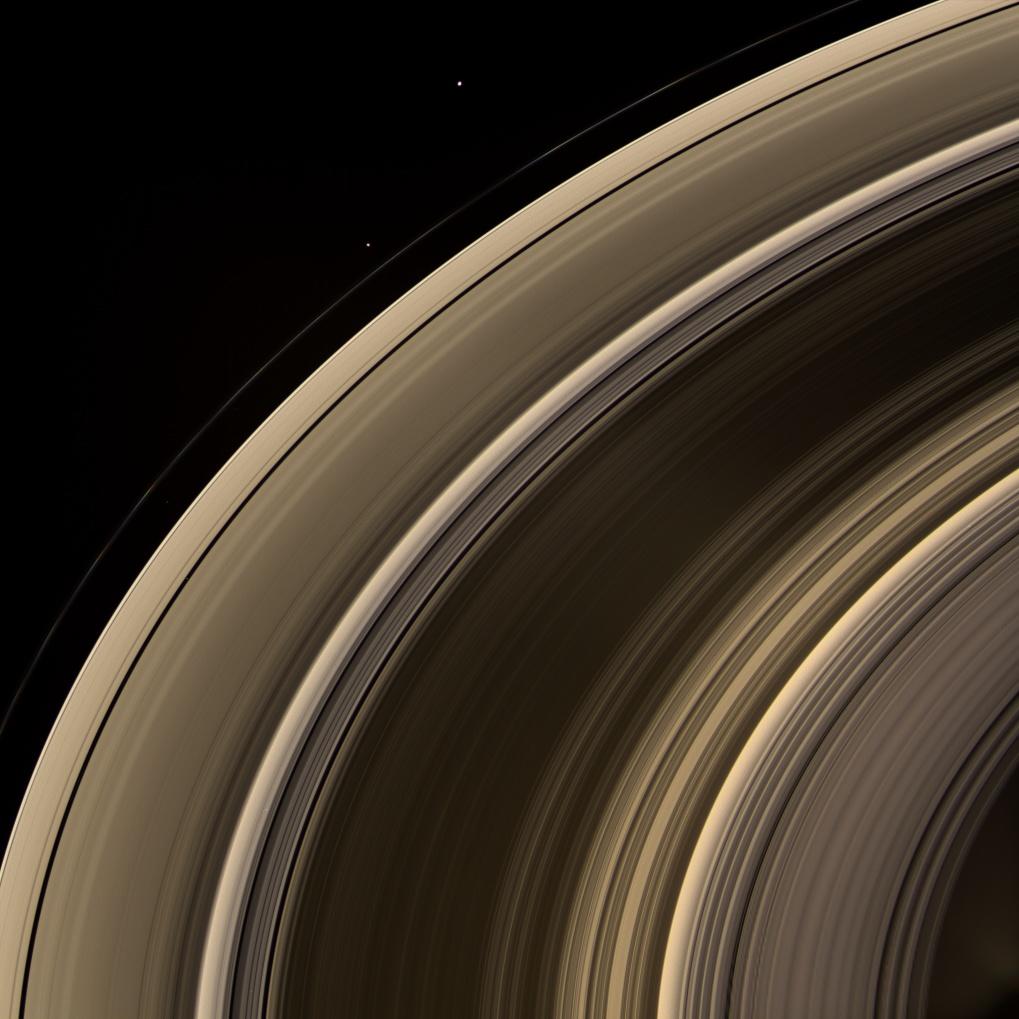Grandeur of the Rings

| PIA Number | PIA09865 |
|---|---|
| Language |
|
From on high, the Cassini spacecraft spies a group of three ring moons in their travels around Saturn.
Janus (181 kilometers, or 113 miles across) is seen at top, while Pandora (84 kilometers, or 52 miles across) hugs the outer edge of the narrow F ring. More difficult to spot is Pan (26 kilometers, or 16 miles across), which is a mere speck in this view. Pan can be seen in the Encke Gap, near center left. (See Expanse of Ice for a labeled Cassini map of the rings.)
The speck seen between the A and F rings at left is a background star.
This view looks toward the unilluminated side of the rings from about 40 degrees above the ringplane. Images taken using red, green and blue spectral filters were combined to create this natural color view.
Bright clumps of material in the narrow F ring moved in their orbits between each of the color exposures, creating a chromatic misalignment that provides some sense of the continuous motion in the ring system.
The images were obtained with the Cassini spacecraft wide-angle camera on Feb. 7, 2008 at a distance of approximately 1.1 million kilometers (700,000 miles) from Saturn. Image scale at the center of the view is 74 kilometers (46 miles) per pixel in the radial, or outward from Saturn, direction.
The Cassini-Huygens mission is a cooperative project of NASA, the European Space Agency and the Italian Space Agency. The Jet Propulsion Laboratory, a division of the California Institute of Technology in Pasadena, manages the mission for NASA's Science Mission Directorate, Washington, D.C. The Cassini orbiter and its two onboard cameras were designed, developed and assembled at JPL. The imaging operations center is based at the Space Science Institute in Boulder, Colo.
For more information about the Cassini-Huygens mission visit http://saturn.jpl.nasa.gov . The Cassini imaging team homepage is at http://ciclops.org .
Credit: NASA/JPL/Space Science Institute
